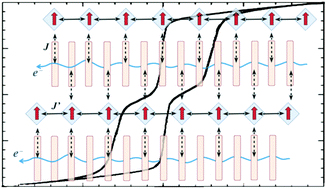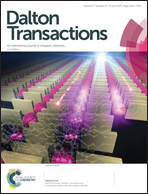Conducting single-molecule magnet materials
Abstract
Multifunctional molecular materials exhibiting electrical conductivity and single-molecule magnet (SMM) behaviour are particularly attractive for electronic devices and related applications owing to the interaction between electronic conduction and magnetization of unimolecular units. The preparation of such materials remains a challenge that has been pursued by a bi-component approach of combination of SMM cationic (or anionic) units with conducting networks made of partially oxidized (or reduced) donor (or acceptor) molecules. The present status of the research concerning the preparation of molecular materials exhibiting SMM behaviour and electrical conductivity is reviewed, describing the few molecular compounds where both SMM properties and electrical conductivity have been observed. The evolution of this research field through the years is discussed. The first reported compounds are semiconductors in spite being able to present relatively high electrical conductivity, and the SMM behaviour is observed at low temperatures where the electrical conductivity of the materials is similar to that of an insulator. During the recent years, a breakthrough has been achieved with the coexistence of high electrical conductivity and SMM behaviour in a molecular compound at the same temperature range, but so far without evidence of a synergy between these properties. The combination of high electrical conductivity with SMM behaviour requires not only SMM units but also the regular and as far as possible uniform packing of partially oxidized molecules, which are able to provide a conducting network.

- This article is part of the themed collections: Spotlight Collection: Lanthanide and transition metal complexes as molecular magnets and 2018 Frontier and Perspective articles


 Please wait while we load your content...
Please wait while we load your content...